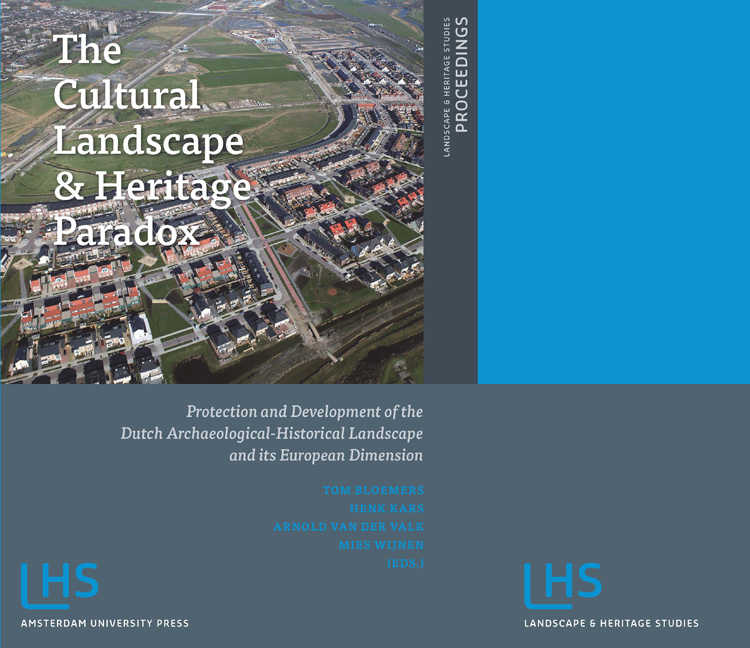 The Cultural Landscape and Heritage Paradox
The Cultural Landscape and Heritage Paradox Book contents
- Frontmatter
- Contents
- Preface
- I INTRODUCTION
- II INSIGHTS AND PROSPECTS OF ARCHAEOLOGICAL-HISTORICAL LANDSCAPE STUDIES
- III LINKING KNOWLEDGE AND ACTION
- IV IMAGINATION - FACTS AND CONSTRUCTIONS
- V SHARING KNOWLEDGE - STORIES, MAPS AND DESIGN
- VI SYNTHESIS AND CONCLUSIONS
- VII MANAGEMENT OF KNOWLEDGE
- VIII AGENDA FOR THE FUTURE
- IX SUMMARY
- X APPENDIX
- Subject Index
- Index of Places and Regions
5 - The Protection and management of the Historic Landscape in Scotland in the context of the European Landscape Convention
Published online by Cambridge University Press: 21 January 2021
- Frontmatter
- Contents
- Preface
- I INTRODUCTION
- II INSIGHTS AND PROSPECTS OF ARCHAEOLOGICAL-HISTORICAL LANDSCAPE STUDIES
- III LINKING KNOWLEDGE AND ACTION
- IV IMAGINATION - FACTS AND CONSTRUCTIONS
- V SHARING KNOWLEDGE - STORIES, MAPS AND DESIGN
- VI SYNTHESIS AND CONCLUSIONS
- VII MANAGEMENT OF KNOWLEDGE
- VIII AGENDA FOR THE FUTURE
- IX SUMMARY
- X APPENDIX
- Subject Index
- Index of Places and Regions
Summary
ABSTRACT
This paper explains Scotland's holistic view of the historic environment, the main policy measures for its protection and management and the valuable new spatial approaches of historic landscape characterisation and historic land-use assessment. It considers the place of the historic environment and the characterisation processes in the context of policy measures for landscape, noting that these are moving towards a greater level of integration that is in keeping with the spirit of the European Landscape Convention. The paper assesses the impact of the ELC in Scotland and takes the view that the trend towards integration is developing as a consequence of the new national planning policy and the Scottish Government's Strategic Objectives, rather than in direct response to the ELC itself. Nevertheless, these current developments are broadly in line with the principles of the ELC and should lead Scotland to a more holistic, informed and participative approach to landscape protection, management and planning.
KEY WORDS
Scotland; historic environment, landscape characterisation, historic land-use assessment; integration
THE NATURE OF THE HISTORIC LANDSCAPE IN SCOTLAND
Many physical traces of past human impact can be seen in the landscape across Scotland. As elsewhere, a wide range of buildings, sites and monuments survive spanning the period since the last Ice Age. Scotland also has a rich legacy of relict landscapes, particularly deserted landscapes of the post- medieval period that were abandoned as a result of wholesale restructuring and land improvements in the eighteenth and nineteenth centuries. These can cover extensive areas on the ground, especially in the less improved uplands (Fig. 1).
Other landscape elements are also the product of, or have been heavily influenced by, human actions in the past, but may be less well recognized. These include designed landscapes, which were explicitly planned for human appreciation of the natural landscape; semi-natural woodland, which has survived largely as a result of human management; and field boundaries, many of which date back to the eighteenth century and sometimes even earlier. Much more, of course, lies hidden beneath the ground surface, for example beneath agricultural land or within wetlands, obscured by natural processes and subsequent human activity (Fig. 2).
This past use contributes significantly to the present character of the landscape of Scotland.
- Type
- Chapter
- Information
- The Cultural Landscape and Heritage ParadoxProtection and Development of the Dutch Archaeological-Historical Landscape and its European Dimension, pp. 151 - 160Publisher: Amsterdam University PressPrint publication year: 2010


